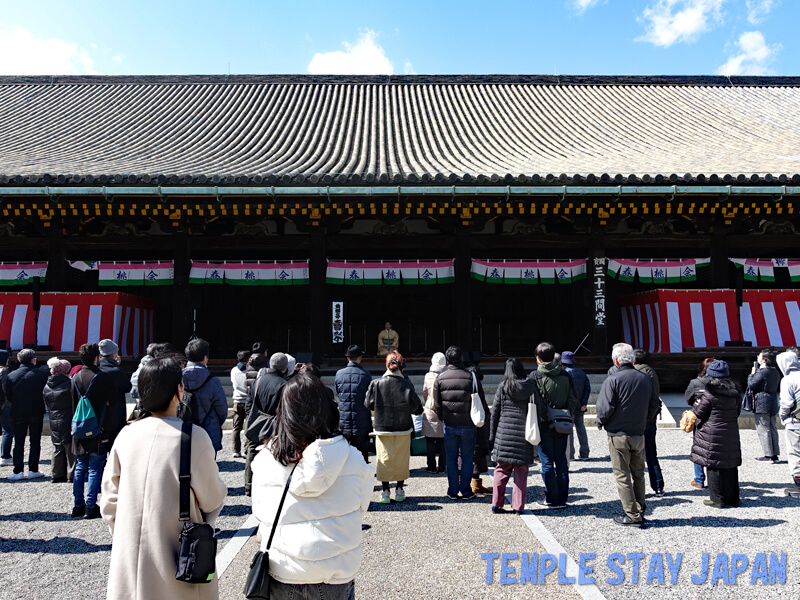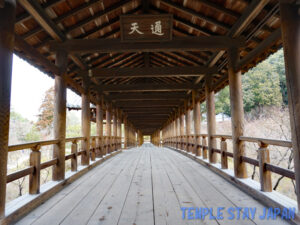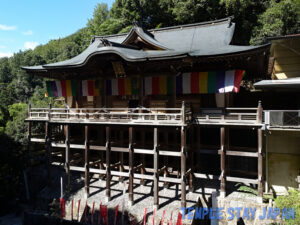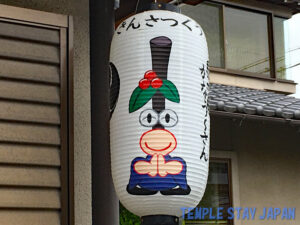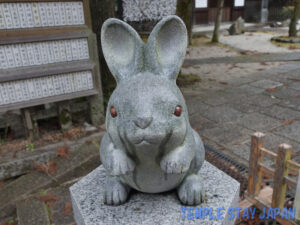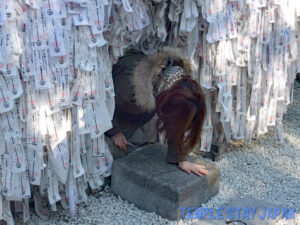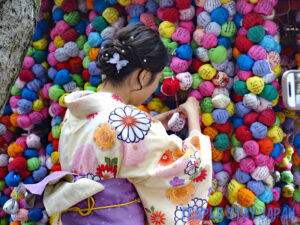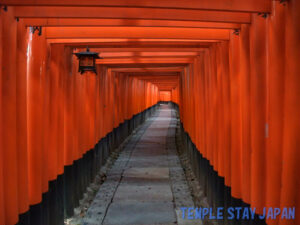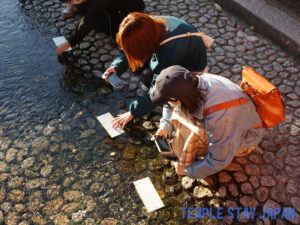Main Hall and Buddhist Statues
The main hall of Sanjusangendo was built in 1164. It was later destroyed by fire, but was rebuilt in 1266 and remains as it is today.
This hall is long and horizontal, stretching about 120 metres (131.2 yd) from north to south. It has been designated a national treasure of Japan.
Inside the hall, there are 1,000 Thousand-Armed Kannon (Sahasrabhuja) statues lined up. There are also statues of the wind god and thunder god. All of these statues are also national treasures.
Other highlights
There is a garden in front of the main hall. Stones and plants are placed around the pond, and at the back there is a vermilion-painted gate.
If you leave the temple grounds and walk south along the road, you will find Nandaimon (The Great South) Gate. It was built in 1595 by Toyotomi Hideyoshi, one of Japan’s most famous military commanders. This gate is designated as an Important Cultural Property.
The wall connected to this gate is an imposing structure measuring 5.3 meters ( 5.8 yd ) high and 92 ( 100.6 yd ) meters long. This wall was also built by Toyotomi Hideyoshi and is designated as an Important Cultural Property.
Kyudo (Japanese archery) event in mid-January
Sanjusangendo has long been a place where Japanese archery events are held under the eaves of the 120-meter-long (131.2 yd) main hall. Currently, a Japanese archery event is held every year in mid-January, with as many as 2,000 participants.
Women are dressed in formal attire and shoot bows.
March 3rd, The peach festival
In Japan, a festival is held on March 3rd to pray for the growth and happiness of girls. There is a custom of decorating with peach blossoms, which are believed to have the power to ward off evil spirits.
On this day, a peach festival is held at Sanjusangendo Temple. The grounds are open to the public free of charge, and women will be given special “peach amulets.”
When I went there, a Rakugo (traditional Japanese comic storytelling) performance was being held in front of the main hall.
On this day, unlike usual, the Buddhist statues in the main hall could be seen from a high position. If you like Buddhist statues, we recommend visiting on this day.
More information
